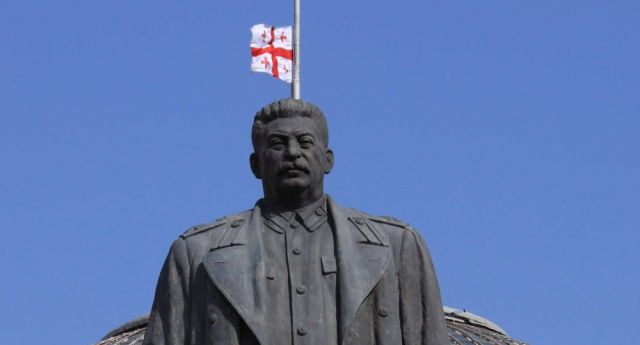The New York Times about Stalin’s Museum in Gori
Rustaveli Avenue in Tbilisi, Georgia, where the Parliament is located, has been occupied by a big group of Georgians since June 20, protesting Russia’s occupation of the country’s 20 %. In turn, Putin is banning flights to Georgia starting July 8. Considering these recent events, Georgia has become one of the biggest writing attractions for international media. Many articles serve as a commercial, tourist-call in the country that is known to be the Pearl of Caucasus and “Putin’s Most Hated Country”. Keeping up with that theme The New York Times went for something more creative, their chosen headline is as follows: A Monster to History, Stalin Is a Tourist Magnet in His Hometown.
Even now, 66 years after his death, most of the people around the globe know about Joseph Stalin – they know that he was one of humanity’s greatest criminals. Fewer people, however, are aware that Stalin came from Georgia – a little town called Gori in particular, was the place of his birth and childhood. His actual name was Ioseb Jughashvili. Many of the elderly living in his hometown Gori, still think of Stalin as their beloved leader. The NY Times article digs into that concept, giving the comments of senior Gorians as an example:
“He was a simple man who grew up and became the leader of a great country,” said Mera B’chatadze, a 70-year-old retired construction worker, who was sitting on a park bench adjacent to the Stalin Museum.
“He was a genius,” added a friend, Givi Lursmanashivi.”
The Stalin museum in Gori opened in 1957. Ever since the fall of USSR, Georgian Gov’t has been dealing with the controversial issue of the Stalin Museum still welcoming visitors. The troubling fact is that Georgia aims for being a part of the West but still has a functioning museum honoring Stalin, who is mostly known for being a Russian dictator. The moral principle here, is clear. However, the museum is a big attraction for the tourists in the country, especially the Chinese and the Russians. Last year, roughly 162,000 tourists visited the museum, as the article claims that’s more than any other functioning museum in the country.
Would not be any surprise to say, that the adoring sentiments for Stalin that the museum and many of the senior Gorians spread, is troubling for most of the Georgian youth. To them, Stalin is nothing more but an anti-Georgian who victimized his own country throughout his rule – the deportation and shooting of over 400,000 Georgians is on Stalin’s hands. However, the fact is the museum continues to be one of the many attractions in Georgia. With it, the museum keeps the belief that Stalin, deep down, was a Georgian nationalist. The NY article stresses this point with a few words from Nutsa Batiashvili, an associate professor at the Free University of Tbilisi.
“A lot of people we talk to say that he kept a cross in his apartment, which meant that he was a Christian,” said Nutsa Batiashvili, an associate professor at the Free University of Tbilisi, who has written about the role of Stalin in Georgian memory.
“They say he made Georgian cuisine very important in the Kremlin, and made Georgian toasting part of the etiquette there,” she added. “I know how weird all this sounds because no one can pinpoint anything that Stalin did which actually benefited Georgia.”
Read the full article for more about Stalin, Gori and the paradoxes concerning the two here.
By Nini Dakhundaridze












